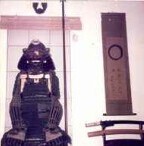All Activity
- Past hour
-
Brian, there is some material online available and on NMB: HOAN TSUBA inherit their name from the founder of the Hoan school, SABUROEMON HOAN, who worked in OWARI province. It is believed that he died in 1614, and is buried at KOKUZANJI Temple. After 1600 the school moved to KII province and became retainers to the ASANO clan. They received a stipend of ten KOKU of rice (which is very little). Haynes lists eleven generations, ranging from early Edo to the beginning of the twentieth century. The second generation was known as HISATSUGU, KANENOBU, and YOEMON. Born in 1600, he was the son in law of the first generation HOAN. In 1619 he went with ASANO NAGAAKIRA (1619–1632) to HIROSHIMA. He succeeded his father as head of the family in 1645. He later worked for a branch of the TAKEDA DAIMYO family. Works signed HOAN KANENOBU are not rare, but they seem younger than the dates given to the second HOAN master The third generation was HISATSUGU, as were the next nine generations. The fourth generation also worked for the ASANO DAIMYO, and received a stipend of 800 KOKU of rice. Starting with the sixth generation, it appears they were no longer making sword fittings, but were ship builders. It seems that the tenth generation did make some fittings in the HOAN style, but were primarily ship builders. Steve Waszak on HOAN TSUBA June 2024 NMB Kawaguchi Saburoemon Noriyasu (Noriyasu can also be read "Hoan") was the Shodai of the Hoan group. He died in 1614, as Jean notes. He worked therefore in the Momoyama Period, not the Muromachi. It is believed he was originally of the Buke, but due to political misfortune (the assassination of Oda Nobunaga in 1582), his status shifted, and he became an armorer, and then, a tsubako. It is, of course, difficult to know the truth of this narrative, but this is what is generally accepted about this smith. Shodai Hoan tsuba are rarely encountered. HIs best works are masterpieces in iron, combining a powerful yakite-kusarashi effect on the surface of the plate, a beautiful "rippling" of the metal in the forging process known as "uwabamigane" (I believe this translates to something like "python skin"), and sensitively-rendered sukidashi-bori to express motif elements. His sword guards often carry that peculiar Momoyama vitality that infuses so many of the arts of that specific time. Tim Evans Most of the mumei attribution papers will either say Hoan den or kodai Hoan. The use of acid etching was introduced to Japan by the Europeans and there are a number of tsuba shops that utilized this technique. I have seen signed etched tsuba with both Jingo and Umetada mei, and I think most of the tsuba papered to Hoan Den are really one of these two groups. However, low relief acid etching and sukidashi bori can be sometimes hard to tell apart. Here is a brief description of the Hoan group: Shodai Hoan is a mysterious figure. He used Hoan as a personal name, whereas the later Hoan smiths used Hoan as a family name. What little information we have tells us that he was of a Buke family and was initially named Kawaguchi Hoan. He was adopted by Takada Sakyo, who was the lord of Kunotsubo castle in the Kasugai district in Owari Province. Sasano noted in the publication, Tosogu Yuhin Zufu (third edition) that according to Hoan family tradition, “when the the Oda family diminished, Sakyo’s child became an armor maker. He also made tsuba.” The diminishment of the Oda family in Owari can probably be traced to Oda Nobuo being removed from Owari Province in 1590, after quarrelling with Hideyoshi during the Odawara campaign against the Hojo. After losing his position as the heir of Takada Sakyo, Hoan reverted back to the Kawaguchi surname and became a metal worker for the Asano family in Kai Province. The Shodai Hoan is known for his unique and artistic treatment of the iron including a very visible coarse folding of the iron (uwebamegane), acid etched designs, and high heat melting of the the finished surface to create patterns.
-
Advice for new collectors from an old dog
Rayhan replied to Rayhan's topic in General Nihonto Related Discussion
Hokke was assuming I had judged their collection and others, impossible to do if they haven't shown them. Not sure why you're shooting from the hip @Tsuku The OP was never about anything you're both going on about, how about we let the post rest hm? -
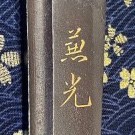
Advice for new collectors from an old dog
Tsuku replied to Rayhan's topic in General Nihonto Related Discussion
Some people choose to share their collections and others do not. Everyone has their own reasons for making that choice. I don’t think it’s appropriate for anyone else to judge that. Separately, I think it is very natural to wonder “where do I fit in the collecting world.” The truth is that there is almost always a bigger fish. Collecting (anything) gets easier when you make your peace with that. -

Advice for new collectors from an old dog
Hokke replied to Rayhan's topic in General Nihonto Related Discussion
Um no, TFB, you made the statement, I simply pointed out your poor memory for having forgotten it. The only thing deep. deep down is your contempt for anyone who has the temerity to disagree with you. Describing nihonto purchases others have made or may make as "paperweights" is quite LITERALLY both looking down at someone AND something at the same time. Not to mention you accused a member of this forum for essentially being a thief. But you know all this TFB, and you arent the least bit bothered by it, which makes you a "special" kind of.........person. - Today
-
Advice for new collectors from an old dog
Rayhan replied to Rayhan's topic in General Nihonto Related Discussion
Ah yes but there is no control to compare, have any of you spoken or posted about you collection? No? So your statement is clearly a personal feeling deep deep down... -
Steve Waszak started following Kanshiro Nishigaki sukashi tsuba
-
This piece is one of the highlights of my friend's collection. It is a 2nd- (or possibly 3rd-) generation Kanshiro Nishigaki sukashi tsuba, featuring a lively double tomoe-plus-kirimon motif. The shape is very appealing, I think, being that wonderfully peculiar aori-gata form that Kanshiro appeared to be quite fond of. A standout aspect of the guard is the fluid motion of the kirimon motif elements: they are not stiff and static (as they might be in a straight up-and-down posture, which is what we usually see); rather, they sweep from 6:00 on the dial toward 12:00, curving upwards through the forming of the blossoms, bringing a lot of vitality to the subject. They are juxtaposed against the negative spaces forming the double tomoe; this contrast only enhances the lively expression in this piece. I'm not even sure these are the best parts of the sword guard, though, as the metal is just superb. It is wonderfully finished, with a fine migaki-ji which nevertheless admits very subtle tsuchime. This is masterwork in tsuba finishing. The color is deep, the patina natural, clear, and glossy (as opposed to shiny). There is just the slightest hint of remaining kebori on the leaves of the kirimon. If this tsuba were larger (8 cm or more), the price would be MUCH higher for this superb tsuba. For those looking to move into higher levels of collecting, I would personally highly recommend this piece. Were I myself not so strictly focused on Owari works, I'd have bought this from my friend myself. Dimensions are 7.3 cm x 7.1 cm x 3.5mm. $1,650.00, plus shipping. PayPal Friends and Family preferred.
-

Exercise in online pics from a site, which Aoe is best?
Jussi Ekholm replied to Rayhan's topic in Nihonto
I think one difficult thing with Aoe is that there are literally hundreds of NBTHK mumei Aoe attributions and the range is huge. Of the examples in this thread in my opinion number 5 is the best. It is Jūyō 21 session, and good quality sword. Unfortunately the shape and size is not what I would be after. For me number 3 would be second butI do not have enough info on that sword to say anything of importance. These might be only 2 I might look for but unfortunately I believe both carry a decent price tag which they deserve. It is rough to say but I would put 1,2,4,6 in the same bucket and they are not interesting to me personally. Yeah I know two of them are Jūyō swords but many Jūyō swords are uninspiring to me. However if would have to buy an item out of these I would mostly look into number 2 as it seems to be decent item for the price. Still I would rather put the same money into some other sword than this Aoe. You can see good quality image of Aoe 5 here: https://web.archive.org/web/20240113073202/https://www.aoijapan.com/img/sword/2023/23761-2.jpg -
This seller is pushing like 95% of fakes claiming that he tries to help some collector...
-
Greetings, I am interested in learning about Hoan tsuba and historical context. Could someone share any resources or provide discussion/feedback? Where to start? Thank you in advance--
-
Another from this seller: https://www.ebay.com/itm/336129368396?itmmeta=01K3EH7GK82AS0AP4DV8YCGPFB&hash=item4e42df214c:g:EqEAAeSwhOZooTnD Note the lack of patina on the saya and the crudely chiseled "Japan" on the blade. John C.
-
This one on the other hand. Rough comes to mind. Yet its Juyo from problematic 1975 Shinsa. Would it get Juyo today? Methinks not. https://www.aoijapan.com/katana-mumei-aoe-schoolthe-25th-juyo-token/
-
@Lewis B Thank you very much for that, it is much appreciated!
-
It's often said utsuri is ethereal but 3 blades I've seen recently including Aoe #5 its just screaming out. The others were a Den Chogi and Kagemitsu. Gorgeous pieces I would love to own if only my pockets were deep enough.
-

Advice for new collectors from an old dog
Hokke replied to Rayhan's topic in General Nihonto Related Discussion
Way to go TFB, what a short memory you have “Especially the people here like @Hokke @Matsunoki @jdawg221 @jawob i think between you guys if you can take all the paperweights off the market and souley focus on those, we'd all have a clearer view of what's really out there.” -
I like Aoe3 too but I do see the love for #5 yep!
-
Aoe5 "Oh La La, Mi Amore!" Yep that is a nice Aoe, Has exactly the features one would want, in terms of the quality is there a link to the listing to see the pics in detail. I am sorry I know this is a flawed exercise because when posting the pics they lose the HD, please let me know. But I LOVE it from what I see so far.
-
Advice for new collectors from an old dog
Rayhan replied to Rayhan's topic in General Nihonto Related Discussion
No one was looking down on anything or anyone. -
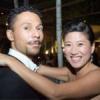
Looking for help with a worn sayagaki.
Ray Singer replied to Coldramen's topic in Translation Assistance
There is a partial MUNE at the top. If the blade is signed Kunimune, then very likely that is what the sagagaki led with. The bottom appears to be a partially nagasa, which is information that you would have based on the current length. The middle section is unclear to my eyes. -
Yes, they're usually available locally before they're put online. Some shops also work with magazines and they refuse to sell anything online for a certain grace period, making sure all subscriptions get a fair chance first. However, online doesn't mean that non-Japanese can buy it. In 2 cases when I inquired about a piece I was told it was for Japanese market only and they don't sell to foreigners. So I had to involve someone locally as an in-between to buy those pieces on my behalf.
-
Atlanta joined the community
-
Coldramen started following Looking for help with a worn sayagaki.
-

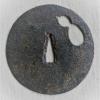

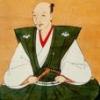
(1).thumb.jpg.1412c4ea66c1c70e2e753b8f28495f84.jpg)
(1).thumb.jpg.48d94b4a2a1bf0deccf19e9a23a33eda.jpg)
(1).thumb.jpg.9cde543d104313d7630f3458ae03fcdb.jpg)
(1).thumb.jpg.3b9517da1d2de5f99f95b71be34a918a.jpg)
(1).thumb.jpg.dddce1c3411fee6bab4bf3903757a5d6.jpg)
(1).thumb.jpg.53e5d910d4bce9f3ada98be884276061.jpg)
(1).thumb.jpg.014711dbf411836712eda24e9a15e5cb.jpg)





